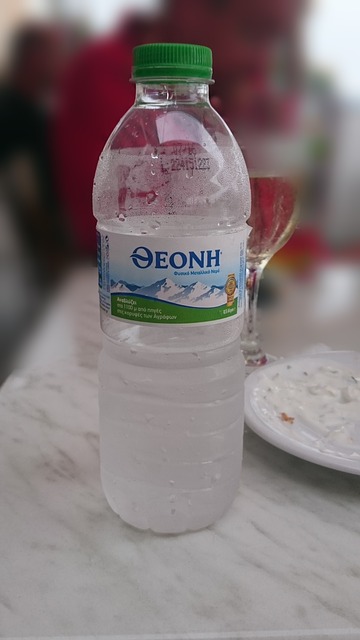I was watching the 2003 indie comedy, Haggard when one of the characters ( Falcone) entered the Future Contest and invented a reverse microwave, i.e. a device that cools things rapidly much the same way the microwave warms up foodstuffs. Falcone later won the contest and was rewarded with the star prize of a diamond-studded mountain bike.
The idea of a fast cooling device may seem futuristic in 2003, but at present, we now have something that may pass for that. Recently I came across a video in CNBC website published last year showing featuring the CEO of coca cola James Quincey giving a demonstration of their new fridge to a reporter. The refrigerator designed through some help with some former NASA scientist (it appears it may be after all rocket science) can turn a liquid soda into an icy frozen slushee by a mere pressing of a button when placed inside the slushee machine.
The super fast soda freezing is courtesy of the new freezer from the Coca-Cola company aptly named the Arctic Coke Coolers. We already know the Arctic or polar region of the world is reputed to be the coldest part of the world with temperatures going south of zero at -68 °C or −90 °F.
The refrigeration unit has two cooling unit; one is the special cooling unit and the other is the Ice-Up unit. The cooling unit cools the soda to temperatures between 26.6 °F (-3 °C) and 23 °F (-5 °C). When the soda is first slowly tilted, then placed on the Ice-Up unit, the customer presses the button there, and the soda slowly forms ice in seconds. This ice formation is highlighted by the light that shines behind the bottle.
The Ice-Up chamber sends tiny vibration up the liquid which in turn causes it to form ice. The truth is, you do not need a fancy fridge to perform this experiment. Neither do you need a bottle of soda to make this happen since a bottle of clean water can be all you require. Just go ahead and cool it to just below - 8 degree Celsius (if you are performing this fun experiment with water, each soda has its specific temperature) this is the tricky part. If you check the Arctic Coke Freezers, there is a particular section for the different drinks such as Sprite, Coke and Fanta as the constituent are not the same hence different temperature for each compartment. If you refrigerate water to - 40-degree Celsius, you'd have a block of ice. But if you cool it to just below that, without it turning into ice, the process is known as supercooling.
The flowing nature of water is due to freely moving molecules of it which often collides with the neighbouring and adjacent molecules giving water its common liquid property we have all grown to see.
However, if the water undergoes a low temperature, at say 32 degrees Fahrenheit or O degree celsius though not in all circumstances, it solidifies and forms ice. At this point, the molecules still vibrate (though immobile) and create a link in the form of a hexagon.
To get an insight into how ice forms in water, we have to understand the term nucleation. Nucleation is simply the formation of water molecules into tiny crystals. The crystals formed in turn form a web-like network of chain reaction until solid ice entirely appears.
This nucleation easily triggers under two conditions- on impurity (hence the reason to make sure water supercooled is very pure) or when the liquid is disturbed via a shake or vibration.
Why the shake causes for ice formation from the top to the down of the bottle is a subject which is closely linked to equilibrium. In equilibrium, the physics and other laws apply as required, but under supercooling (a basic non-equilibrium condition) though often referred to the metastable-equilibrium state as a result of the excessive time that passes before it reverts to the equilibrium condition, the laws of physics may seem not to apply. After all, a disturbance on the bottle is supposed to raise its pressure and hence consequently increase the freezing point, but the reverse is the case here.
The vibration creates cavitation bubbles, a phenomenon which occurs when air churned up inside the water. The cavitation bubbles formed by the perturbation forms the first nucleation site.
It predicts that increasing negative pressure at temperatures below about 262 K [-11.15 Celsius] eventually results in homogeneous ice nucleation while at warmer temperature homogeneous cavitation, i. e. bubble nucleation, dominates. Negative pressure occurs locally and briefly when water is stretched due to mechanical shock, sonic waves, or fragmentation. NatureNovember 2017 Article: Ice nucleation triggered by negative pressure
In conclusion, the Arctic Coke Cooler is far from magic; it is just a cooler with the capacity to chill products at temperatures between -3 °C ( 26.6 °F) to -5 °C ( 23 °F). While the Ice-Up unit produces a 12 direct current voltage that creates the vibration in the drink necessary to yield the nucleation which makes the slush the customers enjoys. Not rocket science if you ask me :)
REFERENCES
If you write STEM (Science, Technology, Engineering, and Mathematics) related posts, consider joining #steemSTEM on discord here. If from Nigeria, there may be need to include the #stemng tag in your post. You can visit this blog by @stemng for more details. You can also check this blog post by @steemstem here and this guidelines here for help on how to be a member of @steemstem. Please also check this blog post from @steemstem on proper use of images devoid of copyright issues here
Would you like to delegate to the @steemstem? Here is a link below
50 SP | 100SP | 500SP | 1,000SP | 5,000SP | 10,000SP | 50,000SP


